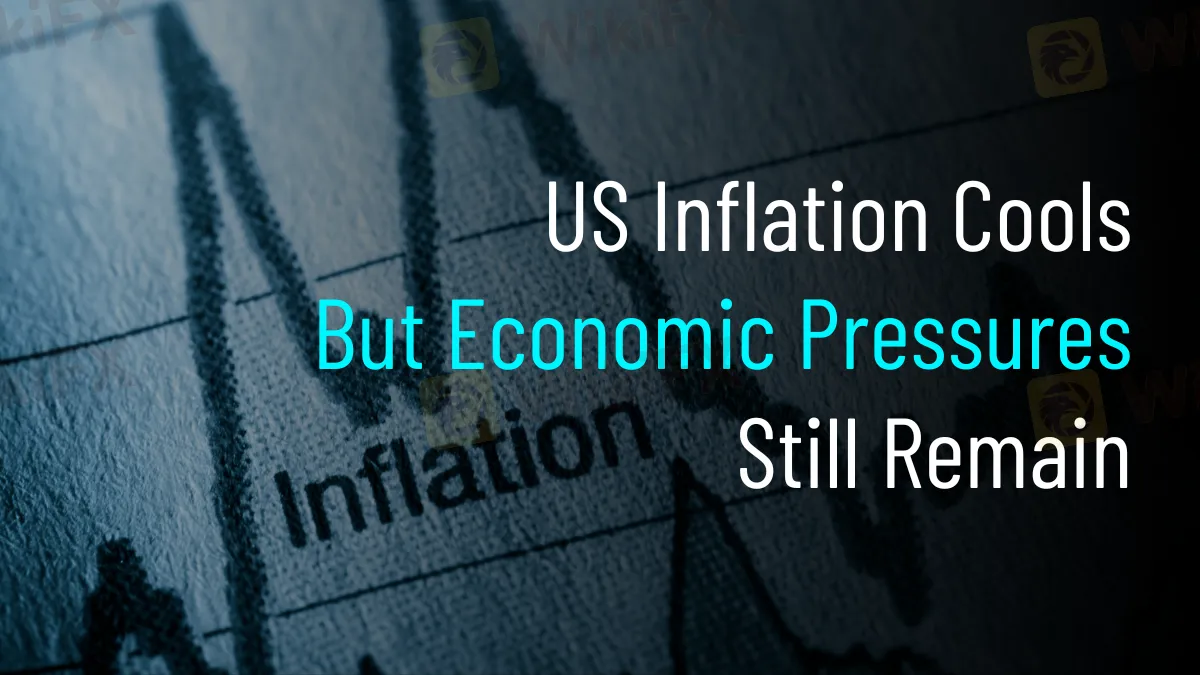简体中文
繁體中文
English
Pусский
日本語
ภาษาไทย
Tiếng Việt
Bahasa Indonesia
Español
हिन्दी
Filippiiniläinen
Français
Deutsch
Português
Türkçe
한국어
العربية
US Inflation Cools, But Economic Pressures Still Remain
abstrak:Inflation shows signs of cooling in the U.S., but persistent economic pressures, particularly housing and utilities, continue to challenge growth.

Inflation trends are decreasing, but underlying pressures are still causing problems for the U.S. economy, which is giving out conflicting signals. Between 2.7% and 3.1% is predicted to be the range of the Consumer Price Index (CPI) as of July 2024. An annual growth of 2.8% is shown by the real-time inflation tracker Truflation. Consumers need more respite due to this persistent deflation tendency, which is mainly driven by declining prices for products and non-core components. But there are still inflationary solid pressures in essential sectors like housing and utilities, making the bigger picture more complicated.
In 2024, the U.S. economy surprised observers by rising at an annual pace of 2.8% in the second quarter, despite these conflicting indications. Good consumer and government spending are the leading causes of this increase. Over this time, there was a notable 2.3% increase in personal spending, which is an essential part of the economy. Still, given that the personal savings rate fell to 3.4%, questions about how long this spending will last persist. Consumers' ability to sustain their present spending levels in the face of high interest rates and persistent inflation has come under scrutiny due to this fall in savings.
Workforce and Salary Developments
A further indicator of pressure is the labor market. After almost three years, the jobless rate reached its highest point of 4.3%. With the second-lowest employment growth since 2020, job increases have halted. The deceleration in wage growth has already begun, which was a plus during the economic recovery. A decline in consumer spending power might be an indication of impending financial difficulties as wage growth slows.
A contributing factor to the present state of the economy is the Federal Reserve's attempts to control inflation via a sequence of interest rate increases. In addition to slowing economic development and increasing unemployment, these rate increases were required to contain growing prices. Thus, there is growing conjecture that the Federal Reserve, in an effort to boost economic activity, would think about lowering interest rates later this year.
Property Market and Industry-Specific Price Increases

Economic uncertainty is still primarily derived from the housing market. 2024 had a 0.49% decrease in home prices from June to July. Yet, there was still a 1.71% increase in house prices year over year. Given that a major amount of household expenses is allocated to housing, the growth in housing costs continues to be a considerable hardship for many families.
Both new and existing house sales have decreased at the same period. An inventory of unsold properties is resulting from rising housing prices that are making it harder for first-time buyers to join the market. This may indicate a change in the market in favour of buyers, but the change will probably take longer than expected because of the ongoing inflationary pressures in the housing industry.
A much more nuanced view of the US economy is provided by sector-specific inflation patterns. For example, month-over-month, the cost of food and non-alcoholic drinks decreased by 0.42%, while year-over-year, the rise was 0.65%. In a similar vein, clothing costs increased by 1.25% year over year but decreased by 0.18% month over month.
Yet, the deflationary tendency was bucked by utilities. In this industry, prices increased by 1.94% year over year and by 0.53% month over month due to increased energy expenses. As a result of growing insurance premiums and healthcare expenditures, healthcare expenses also went up, rising by 0.20% month over month and 3.23% year. While fuel prices grew by 1.16% in July, transportation expenses also increased, with prices rising by 0.25% month over month and 3.33% year over year.
The Global Environment and Monetary Policy
The Federal Reserve has a difficult task ahead of it as inflation begins to decline. In order to stimulate economic development, it must carefully strike a balance with attempts to reduce inflation. Rate cuts may occur, but it will be crucial to determine when and how much of them are implemented. Global variables continue to influence local inflation patterns in the meanwhile, including persistent geopolitical conflicts and supply chain interruptions. The vulnerability of the U.S. economy to erratic fluctuations in inflation and growth stems from these exogenous shocks.
With inflationary pressures expected to continue even as key areas of the economy drop down, the future of the US economy is still unclear. A key factor in determining how the economy develops in the next months will be the choices made by the Federal Reserve. Critical spheres such as the housing market, consumer spending, and aggregate economic growth will be impacted by these choices.
It is a difficult road ahead, but with careful control of inflationary factors, the US economy may steer toward a more stable course. A gentle landing is still possible with the appropriate measures, according to Truflation's research, and the main emphasis will be on preventing a harsh landing.
Get the latest on inflation trends, market updates, and economic challenges. Visit WikiFX News for expert insights!

Disclaimer:
Ang mga pananaw sa artikulong ito ay kumakatawan lamang sa mga personal na pananaw ng may-akda at hindi bumubuo ng payo sa pamumuhunan para sa platform na ito. Ang platform na ito ay hindi ginagarantiyahan ang kawastuhan, pagkakumpleto at pagiging maagap na impormasyon ng artikulo, o mananagot din para sa anumang pagkawala na sanhi ng paggamit o pag-asa ng impormasyon ng artikulo.
Broker ng WikiFX
Exchange Rate


